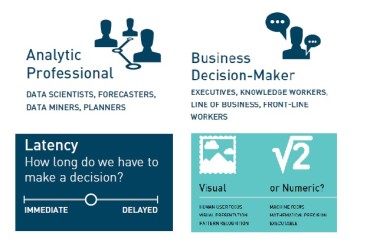
While the benefits are huge for AI, this tech needs and relies on business process automation (BPA) to truly provide quicker ROI in deployments.
Propelled by advances in computing power, the penetration of big data, and broader access to advanced machine learning, AI is likely to see massive adoption between now and 2020. In many cases, AI has been the catalyst to finally convince companies to commit to digital transformation initiatives. According to the report Reshaping Business with Artificial Intelligence, 84% of respondents say AI enables them to obtain or sustain a competitive advantage and 83% believe AI is a strategic priority for their businesses.
But today, early adopters of AI are reporting a disconnect between expectations and related to AI technology. These early projects are consuming time and money, with limited or lower than expected returns. According to a study by Xplenty, “30% of business intelligence professionals still spend at least half of their time cleansing and formatting raw data to make it ‘analytics-ready.’”
See also: Blockchain, automation provide real-time visibility
As a result, businesses are often slow to unlock their data’s true potential for revenue or operational improvements. One of the biggest misperceptions about artificial intelligence is that there is an “out-of-the-box/one-size-fits-all approach,” and it’s this misperception that seems to highlight why early attempts to adopt AI are failing.
As the Xplenty study found, aggregating and normalizing data is critical for AI success, and while many companies have created cross-application “data lakes,” this has not reached broad adoption. Not only does the fragmented data from various applications make it impossible to have an effective dataset, but it creates disjointed or disconnected processes without a full view of the outcome to train algorithms and machine learning models. According to Forrester’s latest research, 55% of firms that invested in AI, have not yet achieved any tangible business outcomes from it.
Without a complete overview of the data flows, connected to goals, AI is unable to optimize predictions or processes. This is where companies who have already adopted business process automation (BPA) technology have an advantage.
Business benefits of AI as a part of BPA
Benefit #1: Data Unification – There are numerous sayings in the data science community, some not fit to print, about how the quality of the data feeding the models determines the quality of the insights. The issue is not just data quality, but data completeness. Finding a pattern in a fragment of the data will lead to a fragmented conclusion. A unified data set is the key to unlocking AI, and it’s something that is often solved as part of a good BPA implementation.
The requirements for automating a process across multiple applications, means you have to create a seamless data flow and likely, a unified and normalized data set. Making good process decisions should be based on data, and BPA is typically a data-driven process. This isn’t just an exercise in improving AI results. ObservePoint confirms that insight-driven firms are more likely to report year-over-year revenue growth of 15% or more.
Benefit #2: Process Mapping/Definition – AI learns faster when it knows what outcome it’s trying to solve. Mapping processes, especially thoroughly enough for BPA creates the framework necessary for a machine learning model – a clear beginning and ending, a finite set of data and interactions, and a clear goal and measure of success – making it possible to learn much more rapidly. Adding machine learning to an existing process speed can improve both the process optimization and the rate at which the machine learns.
Think about it like a map, versus a GPS. They both give you the information about getting from point A to point B, but with GPS it can use the data it has about traffic, previous trips, and more to determine the fastest way, in the moment, to reach your destination.
Fitting Into the Customer Journey
In addition to cleaner data and faster model training, BPA provides the most important thing for AI – context. AI offers tremendous value when processing large volumes of data, like the customer journey. While optimizing one use case in the customer journey is good, business process automation often connects multiple parts of the customer journey to automate across a more complete path than just one use case.
Companies with more robust BPA efforts have often already done this work, giving AI and machine learning the context to deliver more complete outcomes. For example, optimizing for customer lifetime value can be much more comprehensive when AI can see the connection between marketing, sales and service engagements.
Clearly, AI offers tremendous value for improving the efficiency and productivity of teams across the organization, whether automating routine tasks for sales and service teams or optimizing process to achieve greater customer lifetime value. Feeding AI a proper diet of clean data and well-defined processes dramatically improve the results. To prevent AI from learning from bad data, or making decisions without context from incorrect or incomplete patterns and data models, business leaders can get a jump on competitors by adopting in-depth business process automation.




























